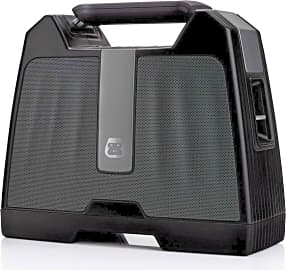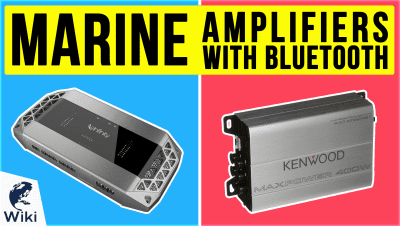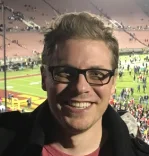The 10 Best Boomboxes

This wiki has been updated 38 times since it was first published in July of 2015. Some of you may be too young to remember that portable stereos were once known as ghetto blasters and boomboxes, but call them what you like, they can deliver great sound in an easy-to-carry package. Modern versions let you play music from a wide range of media, including AM/FM radio, cassette tapes, CDs, MP3s and even streaming services via auxiliary ports and Bluetooth. When users buy our independently chosen editorial recommendations, we may earn commissions to help fund the Wiki.
Editor's Notes
December 08, 2020:
There are a lot of special requirements certain buyers have when seeking a boombox, and each person may weigh certain features differently. If you absolutely have to have a unit with a CD player, you can't do much better than the Venloic Home or Studebaker SB2145B. The Studebaker SB2145B is much more expensive, but includes Bluetooth capability, so if that's important to you, maybe it's worth the money. If it's not, you can save a lot by going with the Venloic Home.
Battery life is also something important to consider. Bumpboxx has many solid models, some of which are quite big and powerful, but the Bumpboxx Ultra stands out because its rechargeable battery can go for 22 hours between charges. The Monster Nomad has a 30-hour battery life, but doesn't have the Bluetooth range of many other units. The Dewalt MAX has range, but its roll cage is rather big and clunky, and the Doss Traveler is compact, but not powerful. If those features are important to you, the tradeoff may be easy, but if not, there are plenty of other good options.
The JBL Boombox is still the top pick because it sounds good, has great battery life, and has an impressive waterproof rating. It even beats out its successor, the JBL 2 Portable, because it costs less while still delivering quality audio. The major difference between them is that the JBL 2 Portable can connect with the brand's latest speakers, while the JBL Boombox uses an older protocol, but for most people, this will not justify a higher price, which is why the JBL Boombox is still king.
November 08, 2019:
For anyone older than 35 or so, the term boombox may immediately bring up images of people walking the streets in the 80s and early 90s blaring their favorite jams from a radio perched on their shoulder. Or perhaps having their ghetto blaster in the back seat because the radio stopped working in their hooptie. On this list, you can not only find throwback models that look just like those stereos from back in the day, but also modern options that offer smartphone connectivity, rechargeable batteries, waterproofing, and more.
During this update, we replaced many models that we previously ranked. On example is the Ion Job Rocker Plus, which seems to suffer from Bluetooth issues not long after the warranty period ends. Another is the SereneLife Portable, which many find irritating due to the female voice with a thick Chinese accent that alerts you every time you turn the device on, try and pair Bluetooth, or have a low battery. One final example is the Quantum FX J22UBK, which suffered from too many reports of destroying cassette tapes.
Though we had to remove many options, the good news is that we found some great models to replace them with. If you are looking for a waterproof speaker, we have the JBL Boombox, which offers impressive sound and even floats. There is also the much more compact Doss Traveler, which is easy to bring along anywhere with its included shoulder strap and lightweight build. Additionally, the Monster Nomad has some basic water-resistance and can stand up to a few splashes or being caught in an unexpected downpour.
If you are really looking for something with that retro vibe, we have the Studebaker SB2145B and Victrola VBB-10-SLV. Both of these mix modern features with an old school style that will definitely attract some attention. The Victrola VBB-10-SLV even has a cassette player, along with the Sony CFDS70.
Special Honors
Dewalt DCR025 When working on a job site, you don't have to choose between listening to music or charging the batteries for your tools. With the DCR025, you can use the 2 AC power outlets and USB port to let batteries and devices charge while you enjoy your tunes. While not everyone will need this feature, any Dewalt loyalist will appreciate it. dewalt.com
Bumpboxx Uprock V1S The biggest and loudest model in the Bumpboxx collection is also incredibly expensive, but with four eight-inch woofers and 1,000 watts of power, it's perfect for those who want their music to be heard far and wide. It weighs 48 pounds, but with a Bluetooth range of 300 feet, you can leave it where it is and still rock out. bumpboxx.com
Even Hip Hop Needs Some Heavy Metal
Responsible for the death of countless batteries, boomboxes were notorious for pushing the limits of quality engineering.
Responsible for the death of countless batteries, boomboxes were notorious for pushing the limits of quality engineering. Although handles rarely broke, they often looked as if they wanted to just to spite the absurdity of what they were designed to do.
Take, for example, Lasonic's TRC-975. Weighing in at a whopping 23.3lbs (batteries included), it required 10 D cells to power its two 8" woofers. But that was back in 1988 when sound superseded sense and music wasn't meant to stay plugged in or sit in pockets.
Someone actually looked at that monstrosity, looked at the engineer guilty of conceiving it and said, without a hint of irony, "It needs a handle."
200-watt woofers vibrating their screws loose wasn't the only reason boomboxes had heavy metal casings. The handles needed something sturdy to latch onto. Ergonomic plastic handles folding flat in plastic housings simply wouldn't suffice. Portable stereos that could double as counterweights for elevators needed something stronger.
As Lewis Carroll once said, "Take care of the sound and the sense will take care of itself."
To Boom Or Not To Boom
Back in the Eighties and early Nineties, the most important feature of a good boombox was bass. Be you lounging in your backyard with some friends or hosting a romantic dinner in a van down by the river, it seemed like there was never enough bass to kill the mood.
And those who love rap tend to keep it to themselves while they're in public.
Boombox manufacturers spent so much time trying to figure out how to overpower crowded streets with portable woofers they never stopped to think about how a boombox might sound at a reasonable volume. Indeed, if you turned your TV all the way up while watching Saturday Night Live and your boombox all the way up and you could still hear Chris Farley screaming at you, your boombox wasn't up to snuff.
For better or worse, we live in the Age of the Earplug. Noise pollution is no longer hip. Boomboxes no longer hop down the sidewalk. And those who love rap tend to keep it to themselves while they're in public.
Needless to say, the criteria for what makes a good boombox good has drastically changed.
Detachable speakers are great: We no longer dance with them propped up on our shoulders, anyway.
Smartphone docks have completely replaced cassette decks and CD players: Nobody makes mix-tapes anymore and MP3s have rendered CDs all but obsolete.
No handle? Not a problem. My friends and I aren't going anywhere.
Sure, you can still buy boomboxes for break-dancing on the street, but for those who just want portable speakers for their smartphones, there's no time like the present.
Up Jump The Boogie To Be
Lovingly called a Brixton briefcase by Londoners and a ghettoblaster by Americans, the boombox was invented by none other than the very same brilliant minds that brought us the compact cassette, Philips.
That's right. A Dutch company based in Amsterdam permanently altered British and American cultures in the Seventies and Eighties. Here's how:
The introduction of stereo-quality input and output jacks made it possible for the boombox to be used as a portable P.A. system.
About a decade before the boombox, Philips invented the cassette as a compact medium for storing audio. They announced their invention a year later on the Berlin Radio Show, and then waited an additional year before announcing it in the United States. They licensed the format for free in hopes that Japanese manufacturers would take advantage of the new technology and help spread the word. They did.
By 1966, the compact voice recorder and it's requisite cassettes were a huge success. But Philips wasn't satisfied. They wanted a recorder that could also play back the audio with state-of-the-art fidelity, something their compact recorder simply could not do. It recorded just fine, but the playback left a lot to be desired.
And so the first boombox was born.
Initially more popular in Japan where they were made and Europe where they were first distributed, the boombox finally made its way into the hearts and minds of young Americans in the mid-Seventies. The introduction of stereo-quality input and output jacks made it possible for the boombox to be used as a portable P.A. system. With the help of a microphone or a pair of turntables, MCs and DJs could spit and scratch on the fly so long as their batteries didn't run dry.
By the mid-Eighties virtually everyone in America had a boombox. There were boomboxes in the subway, boomboxes on the beach, boomboxes on hot dog stands in Central Park, boomboxes in the back seats of old cars that only had radio tuners on board.
By 1989, boomboxes were a pop culture phenomenon, featured in films such as Spike Lee's Do the Right Thing, Say Anything with John Cusack, and the hideous Teen Witch with its forced hip hop sequence. Why? Because every film needs a good boombox.















